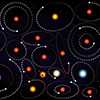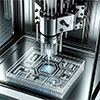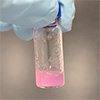Oct 23, 2023 (Nanowerk News) In a new study published in the Astronomical Journal ("Developing a Drift Rate Distribution for Technosignature Searches of Exoplanets"), researchers used the known population of exoplanets and extrapolated to the much larger, unknown population of exoplanets to set better thresholds for planetary effects on signals...
LIGO surpasses the quantum limit
Oct 23, 2023 (Nanowerk News) In 2015, the Laser Interferometer Gravitational-Wave Observatory, or LIGO, made history when it made the first direct detection of gravitational waves, or ripples in space and time, produced by a pair of colliding black holes. Since then, the U.S. National Science Foundation (NSF)-funded LIGO and...
Digital 3D printing advance enables on-demand custom microfluidics
Oct 23, 2023 (Nanowerk Spotlight) Microfluidics, the science of manipulating tiny amounts of fluid in micro-scale devices, has long held promise for revolutionizing fields like medical diagnostics, chemistry, and biology research. But the specialized manufacturing techniques traditionally required to produce microfluidic chips have limited their widespread use. Now, researchers at...
Researchers develop DANGER analysis tool for the safer design of gene editing
Oct 23, 2023 (Nanowerk News) A team of researchers has developed a software tool called DANGER (Deleterious and ANticipatable Guides Evaluated by RNA-sequencing) analysis that provides a way for the safer design of genome editing in all organisms with a transcriptome. For about a decade, researchers have used the CRISPR...
new biomaterial hits the sweet spot
Oct 23, 2023 (Nanowerk News) Scientists at UNSW Sydney have created a new material that could change the way human tissue can be grown in the lab and used in medical procedures. Key Takeaways Scientists have developed a new hydrogel, named Trpzip, that mimics the properties of natural human tissue,...
Adaptive optical neural network connects thousands of artificial neurons
Oct 23, 2023 (Nanowerk News) A team of researchers headed by physicists Prof. Wolfram Pernice and Prof. Martin Salinga and computer specialist Prof. Benjamin Risse, all from the University of Münster, has developed a so-called event-based architecture, using photonic processors. In a similar way to the brain, this makes possible...






